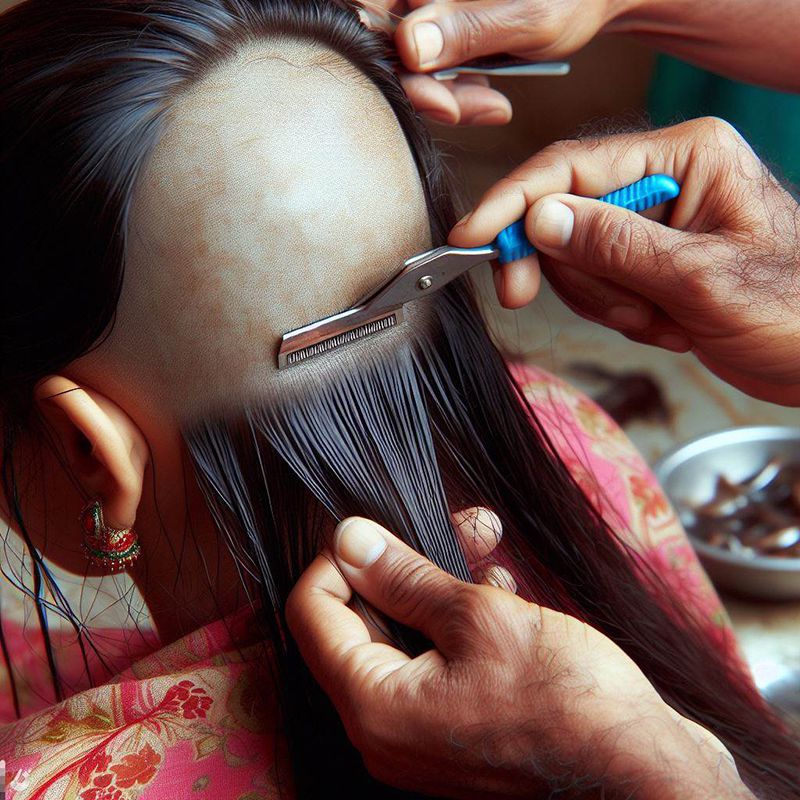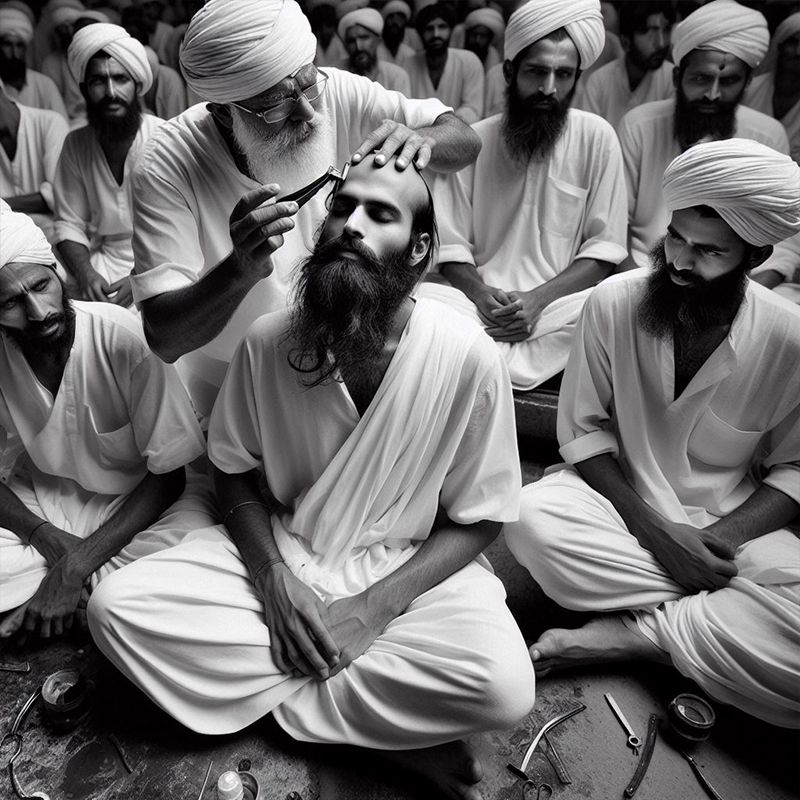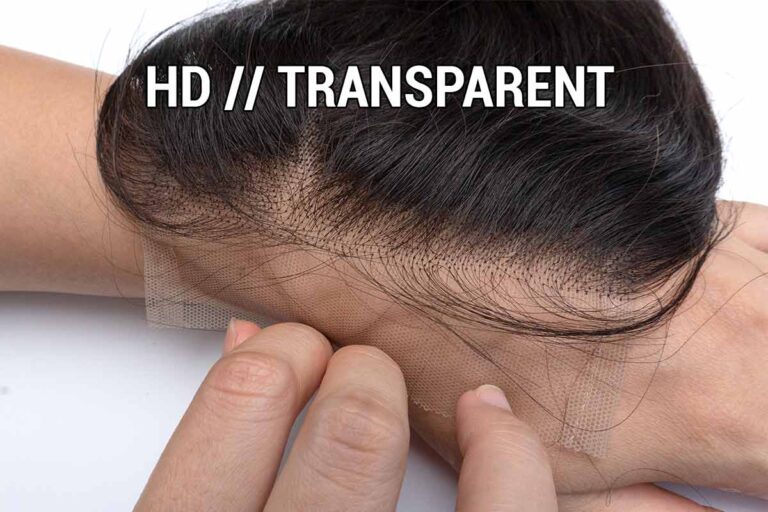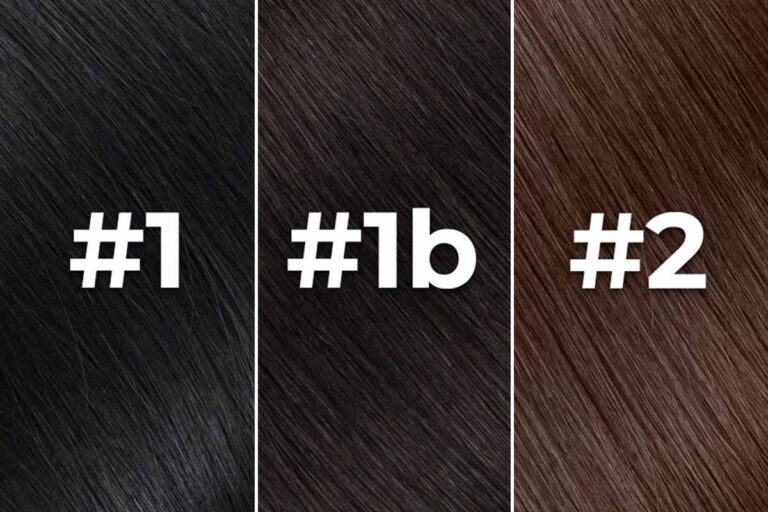How Indian Hair Is China’s Nightmare
It is well-known that India gets their hair from Indian hair temples, as donating hair is part of their culture. They have a large stock of donor and floor hair which they can use to produce hair extensions and/or export to other countries. Many people think that this implies that most hair from China is also from India. However, that’s mostly their assumption, and no accurate data is available to back that up.

Table of Contents
1. Do Chinese companies import Indian Hair?
While India does play a role in China’s hair industry, its influence may not be as significant as one might assume.
1.1 Does China get raw hair from India?

Raw hair is the highest quality available and is cut directly from a donor. Because the demand for raw hair exceeds the supply, export availability is limited. Hair temples primarily sell raw hair locally, making it difficult for Chinese companies to obtain this Indian raw hair. Suppose India can export hair to the US with a 30% profit margin, and China will end up paying the same. If Chinese manufacturers also want a 30% profit margin, they’ll be 30% more expensive than their Indian competitors selling the same hair material. As a result, we can confidently say that Chinese companies do not purchase raw hair from India.
1.2 Does China get virgin hair from India?
While real virgin hair is of the same quality as raw hair, the term “virgin hair” has been degraded to describe floor hair aligned with a non-remy to remy machine. It will still be chemically processed after that to prevent tangles. We call it ShunFa in China.
The shape and thickness of hair vary across different regions. Chinese hair is round and coarse, resulting in straight strands, while in contrast, Indian hair is oval and thin, leading to a more wavy texture.
White women with fine hair might prefer Indian hair, but coarser hair can handle processing or bleaching better. The chemicals weaken the hair, so thicker hair lasts longer.
Indian and Chinese hair are equally good in their raw form, but they have slightly different properties. For processing, Chinese hair has an edge over Indian.
Many Chinese manufacturers share this opinion. They don’t like to use Indian hair to produce Virgin Hair.
1.3 Does China get its lowest quality hair from India?
While some floor hair is aligned with a non-remy to remy machine, the lowest quality human hair skips this step and receives an acid bath directly. An acid bath strips the cuticles to prevent tangles, and a heavy silicon coating is applied to make the hair look pretty. The hair is severely damaged and will not last more than a couple of weeks. If quality isn’t a concern, Indian floor hair from temples will suffice. We’ve asked multiple hair collectors what percentage of this lowest quality hair comes from India. The answer is somewhere between 30 and 50%.
2. Getting accurate data
Some websites discuss importing and exporting hair products from various countries, but the information is often inaccurate. For example, Hong Kong appears to be a significant exporter of hair extensions, sometimes larger than Mainland China. However, many packages from southern China are sent to Hong Kong before going on their international flight. This significantly distorts data.
Furthermore, many Chinese hair manufacturers and companies aren’t registered as official businesses. If they did, they would have to pay a lot of tax and raise the price of their products. This makes the accurate gathering of data extremely difficult. And the next time you order human hair from Asia, look at your package; it will say “synthetic hair sample.” We do this to indicate a low value on the package and help you avoid paying import tax.
The claim that China gets all of its hair from India is simply unfounded and unsupported by data. As explained previously, China getting their raw hair from India defies logic. And hence, raw Indian hair bundles are not actually made in China.

Questions & Answers
What are Indian hair extensions?
Indian hair extensions are a type of hair product that are made from human hair that is sourced from India. It’s valued for its quality, texture, and versatility, and is widely used in the hairdressing industry.
Is Indian hair ethically sourced?
It depends, part of the money from the sale of Indian hair is reinvested into the economy, contributing to initiatives such as building schools for those in need. However, only a small part of the money earned may go towards these efforts, and corruption can sometimes lead to funds being misused.
Additionally, the sourcing of Indian hair involves religious rituals, such as Mundan or Mottai, where individuals part with their hair as a purifying ritual or in specific life circumstances. If you are concerned about negative energy or spirits, this is worth considering.
Is Chinese hair different from Indian?
When comparing hair from India and China, there are some subtle differences. Chinese and Vietnamese people usually have coarse, straight hair due to their genetic makeup. On the other hand, Indians have a genetic mix from Central Asia, the Middle East, and Europe. As a result, Indian hair is generally thinner, can be naturally wavy or curly, and is often brown. For Caucasians, Indian hair extensions are typically a better match. However, Chinese and Vietnamese hair are better suited for processing, bleaching, and durability.
What is special about Indian hair?
Indian raw hair is special because it is thinner than the average Asian hair. This makes it a better match for white women’s natural hair than thicker and coarser hair would be. Indian remy hair has a flatter structure, which allows Indian women to have naturally wavy hair. It also holds a curl better than hair from China, Vietnam, or Cambodia.
How are Indian hair extensions made?
Indian hair extensions are often made from human hair that is donated or sold by Indian women as a religious offering at Hindu temples. This practice is known as tonsuring, and it is a way of expressing devotion, gratitude, or repentance to the gods. The temples then auction off the hair to hair extension manufacturers, who process it and export it around the world.
A lot of our articles first start on our Facebook page. Follow us there and feel free to leave your questions, or contact us through WhatsApp/iMessage: +86 135 3369 3283.






